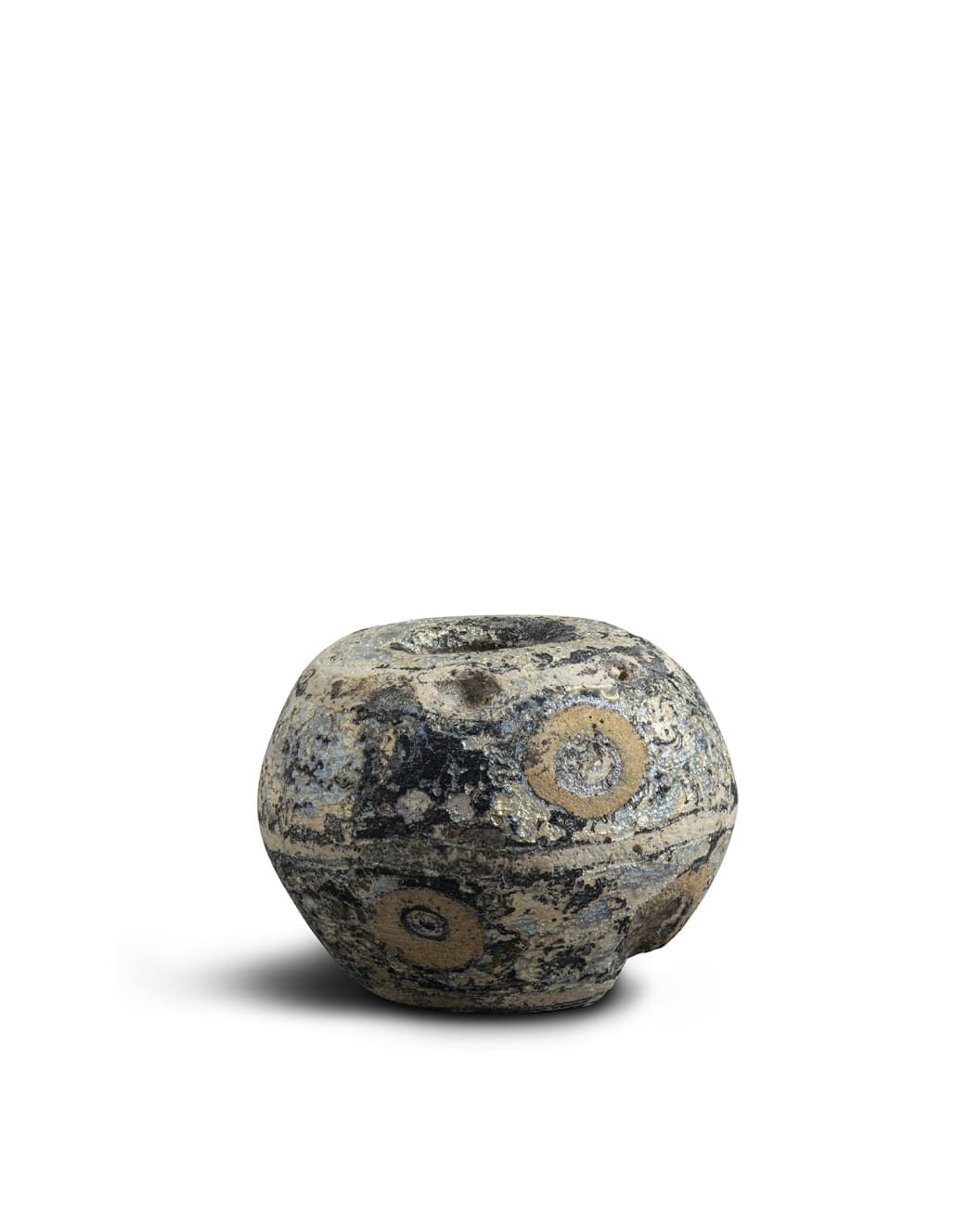Greek
A Phoenician glass core-formed eye bead, Eastern Mediterranean, circa 5th-3rd Century BC
Glass
Height: 2.2 cm
A hemispherical bead with eyes and trailing.
A hemispherical bead with eyes and trailing.
Provenance
Private collection, New Mexico, acquired prior to 2000Publications
Phoenician (or Carthaginian) glass eye beads were used throughout the Mediterranean between the 7th – 3rd centuries BC, predominantly as protective amulets used to ward off evil. They became important apotropaic (to avert evil, from the Greek αποτρέπειν ‘to ward off’) devices that were worn in a manner of different ways, such as on necklaces and were even sewn into layers of clothing.The eye on the majority of these little amulets was depicted in blue. During antiquity it was believed that blue-eyed people were the most adept at delivering the curse of the evil eye. Aristotle warns in De generatione animalium and Physiognomonica against people with blue eyes and says that they should be avoided at all costs! It is for this reason that protective charms depicted blue eyes as a way of repelling the evil eye. Blue eyes can’t curse you if they are staring back at blue eyes.
